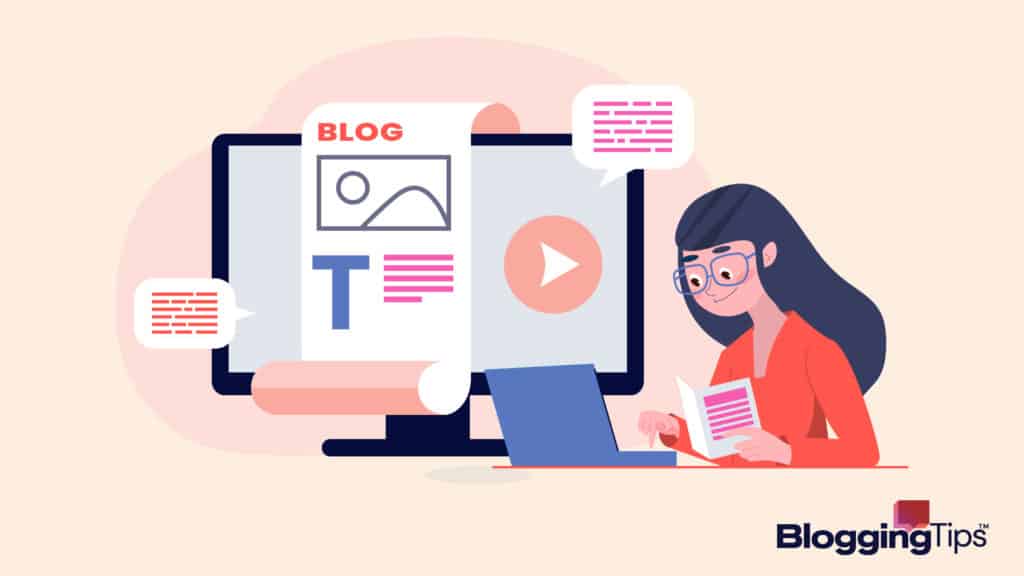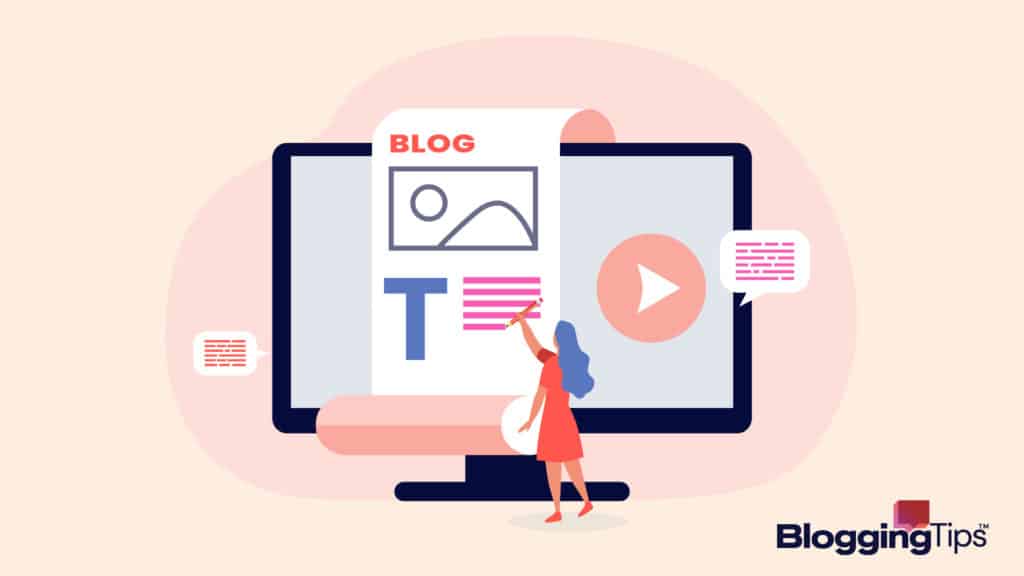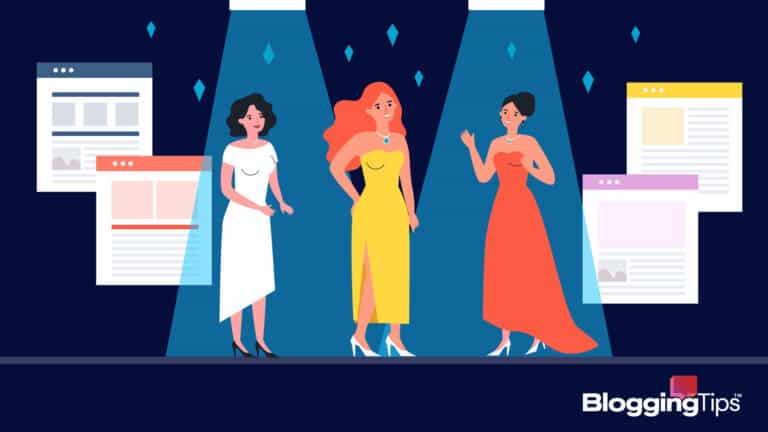If you’re just starting as a blogger, you may be wondering about blog writing format, right?
In this post, we’ll give you some tips on how to write great content for your readers.
We’ll also show you some examples of different blog formats that you can use.
So whether you’re just getting started or you want to improve your writing skills, this post is for you.
- What Is A Blog Post Format?
- Why A Blog Format Is Important?
- Three Main Types Of Blog Post Formats:
- How To Choose The Right Blog Post Format For Your Content
- Tips For Creating A Successful Blog Post Format
- 16 Rules of Blog Writing and Layout [Which Ones Are You Breaking?]
- THE KING OF POP IS DEAD! How he really died! 10,000 pills in 6 months.
- Blog Rules are Based on Two Things:
- Blog Rules: The 16 Rules of Blog Writing and Layout
- 1. Format Every Blog Post
- 2. Constrain Column Width
- 3. Types of Blog Writing: Use Headers and Sub-headers
- 4. Use Lists
- 5. Use Punctuation
- 6. Short Paragraphs
- 7. Font Type
- 8. Font Size
- 9. Drop the Italics
- 10. Capital Letters
- 11. White Space
- 12. Background Color
- 13. Using Images
- 14. Be Consistent
- 15. Tell a Story
- 16. The Golden Rules of Blogging
- Blog Rules Practice
What Is A Blog Post Format?
A WordPress blog post on a blog page typically contains several different elements, including a headline, an introduction, one or more body paragraphs, and a conclusion.
The headline is designed to grab the reader’s attention and give them an overview of what the blog post will be about.
The introduction should provide some context for the blog post and may include a brief story or anecdote.
The body paragraphs will contain the bulk of the information in the blog post, and each paragraph should focus on a single idea.
Finally, the conclusion should summarize the main points of the blog post and leave the reader with something to think about.
Although there is no hard-and-fast rule for how to format a blog post, this is a common structure that many bloggers find successful.
Why A Blog Format Is Important?
The format of your blog post is important for several reasons:
1. It Helps To Keep Your Thoughts Organized and Focused
When you sit down to write a blog post, it can be helpful to have a clear format in mind.
This will allow you to keep your thoughts organized and focused on the topic at hand.
Trying to wing it without any sort of structure is more likely to result in a disorganized, rambling mess of a post.
You can accumulate blog post ideas while writing blog posts with time.
2. It Makes Your Post Easy to Read and Scannable
Let’s face it: most of us are pretty impatient when reading online.
We want to be able to quickly scan a blog post and get the information we’re looking for without having to wade through a lot of unnecessary fluff.
A well-formatted new blog post will be easy to read and scannable, which will keep your readers engaged.
3. It Gives Your Blog a Professional Appearance
Writing blog posts that keep readers engaged, is not an easy task.
Especially, when you start writing your first blog post, you are afraid and wish to create quality blog posts like many other bloggers who are already on the blog platform.
You also try to find blog post examples that help you develop your very first blog post.
When you have a well-formatted new blog post, it gives your entire blog a more professional appearance.
This is especially important if you’re trying to attract new readers or grow your business.
If your blog looks like it was thrown together haphazardly, people are going to be less likely to take it seriously.
On the other hand, a well-formatted blog post shows that you’re detail-oriented and take pride in your work – both of which are qualities that will make people more likely to trust you and your message.
Earn 10,000 free words in Jasper when you sign up using our Jasper referral link.
You're LITERALLY minutes away from having mind-blowing results that work.
It's only $29 to start AND if you don't like it for any reason, the Jasper team will refund your payment 100% - no questions asked.
Three Main Types Of Blog Post Formats:
Basically, there are three types of blog post formats-
- Standard format
- List format
- How-to format
1. Standard Format
The standard format is the most common type of blog post format.
In this style of writing, you’ll simply write a headline and then start with an introduction.
From there, you’ll move into the body of the post and conclude with a summary or call-to-action.
This is the simplest format to follow and is a great starting point if you’re new to blogging.
It’s also a good choice if you’re writing a post that doesn’t require any special formatting (like a list or tutorial).
The content you use for this standard format usually includes things like:
- Your opinions
- Stories
- News reports
However, there is no standard format for blog posts, but there are a few elements that are commonly included.
Most blog posts include a headline or title, which tells readers what the post is about.
They also typically include an introduction, which gives readers a brief overview of the topic.
The body of the post is where the bulk of the content is found, and it is often divided into sections with headlines to make it easy to read.
Finally, most blog posts end with a conclusion, which may include a call to action or a summary of the main points.
While there is no right or wrong way to format a blog post, including these elements can help to make your post more readable and engaging.
2. List Format
As a blogger, you have a lot of freedom when it comes to the format of your posts.
You can write in long form, or you can keep things short and sweet.
You can include photos, videos, or infographics.
You can even mix things up and use a variety of formats within a single post.
However, there is one type of blog post format that tends to be overlooked: the list format.
While it may not be the most exciting format, the list format can be extremely effective.
For one thing, it is highly scannable, which is important given that most readers only skim blog posts.
Moreover, it is easy to digest and remember, making it ideal for those who want to take away key points from a post.
Finally, the list format is versatile and can be used for a wide range of topics.
Whether you want to share your top tips for saving money or your favorite recipes for summer BBQs, the list format is a great option.
So next time you’re brainstorming ideas for your blog, don’t forget about the power of the list!
3. How-To Format
If you want to write a blog post that is both informative and helpful, the how-to format is a great option.
This type of post walks readers through a specific process, such as how to start a blog or how to make a perfect green smoothie.
The key to writing a successful how-to post is to make sure that your instructions are clear and easy to follow.
You’ll also want to include plenty of photos or videos to illustrate each step.
Finally, don’t forget to proofread your post carefully before hitting publish!
By taking the time to create a well-written and helpful how-to post, you’ll give your readers the information they need to take action on your advice.
How To Choose The Right Blog Post Format For Your Content
With so many different blog post formats to choose from, it can be difficult to know which one is right for your content.
Here are some factors to consider when making your decision.

1. Consider The Purpose Of Your Blog Post
First, think about the purpose of your blog post.
Are you trying to inform or educate your reader?
If so, a list format or an article format might be most appropriate.
Or, are you trying to engage your reader in a discussion?
If so, a Q&A format or a round-up format might be better suited.
When you write guest blog posts or gather your first blog post ideas then probably your blog theme is already decided.
2. Think About Your Target Audience
Next, consider your target audience.
What type of content do they respond to?
If you’re not sure, take a look at some of your most popular blog posts.
What format are they in?
Also, consider using Google Analytics to see how people are interacting with your content.
This data can give you insights into what type of content your readers prefer.
3. Consider The Length Of Your Blog Post
Second, consider the length of your blog post.
If you have a lot of information to share, an article format might be best.
But if you only have a few key points to make, a list format could be more appropriate.
You could find numerous free blogging sites on search engine optimization.
Search engines usually prefer to show shorter blog posts in their search results, so if you’re aiming for SEO, it’s important to keep your posts concise.
4. Take Into Account The Desired Level Of Reader Engagement
Third, take into account the level of engagement you want from your reader.
If you want them to interact with your content, a Q&A format or a round-up format might be most effective.
But if you just want them to consume your content and move on, an article format would probably suffice.
5. Consider The Blog Content
Finally, consider the blog content itself.
What type of information are you sharing?
If it’s something that is best presented visually, like a recipe or a how-to guide, then a video or photo tutorial might be most appropriate.
But if it’s something that can be easily explained through text, like a list of tips or ideas, then a traditional blog post format would work well.
Ultimately, there is no right or wrong answer when it comes to choosing the right blog post format for your content.
The most important thing is that you select a format that is well suited to the topic and purpose of your post.
By taking the time to do this, you’ll be able to create a blog post that is both informative and enjoyable for your reader.
Tips For Creating A Successful Blog Post Format
Now that you know how to choose the right blog post format for your content, here are a few tips to help you create a successful post.
1. Keep It Simple
When it comes to the blog post formats, less is definitely more.
Don’t try to cram too much information into one post.
Instead, focus on covering one topic and doing it well.
2. Be Consistent
If you’re going to use a specific blog post format, it’s important to be consistent with it.
Once you’ve selected a format, stick with it for all of your posts.
This will help create a cohesive and polished feel for your blog.
3. Write In Your Own Voice
No matter what blog post format you choose, it’s important to write in your own voice.
Be yourself and let your personality shine through in your writing.
This is what will ultimately engage and connect with your reader.
4. Have Fun With It
Finally, don’t forget to have fun with it!
Blogging should be enjoyable, so make sure to find a format that you enjoy writing in.
By following these tips, you’ll be well on your way to creating successful blog posts that will engage and delight your readers.
I hope you found this information on choosing the right blog post format helpful.
If you have any questions, feel free to leave them in the comments below.
16 Rules of Blog Writing and Layout [Which Ones Are You Breaking?]

Remember newspapers?
People used to get them delivered to their doors and read them over breakfast.
They’re big and awkward to hold and they cover your fingers with black printer ink.
Plus, getting them to your doorstep takes hours, so by the time you read a newspaper, the news isn’t all that new.
Newspapers are going out of business because their news cannot keep up with the 24/7 news cycle that is so prevalent today [and with content marketing and social media].
Newspapers have their drawbacks but one thing they do right is to make sure their stories are easy to read.
By that, I mean how they format and layout the newspaper and each individual story.
Of course, the first newspapers hit you with a headline that makes you really want to read more.
Something like this headline works wonders:
THE KING OF POP IS DEAD! How he really died! 10,000 pills in 6 months.
Sensational tabloids aside, the content in newspapers is usually good ~ the writing’s high quality and they usually get their facts straight.
But quality content isn’t all you expect when you buy a newspaper and it isn’t enough for blog writing either.
All newspapers make sure their content is easy to read by constraining the width of their columns and that’s what their readers expect.
Blog writers need to do the same when writing blogs and format their blog posts and picking their blog designs so they’re easy to read.
Long, narrow newspaper columns mean your eye can easily jump from the end of one line to the beginning of the next without losing its place.
Proper blog layout is essential to a successful blog layout and is just a small part of what I teach in my free 5 day Start a Blogging Business Crash Course.
You’ll learn the ins and outs of what it takes to build a blog capable of making $1,000+/month.
If your blog’s column is too wide, readers will keep getting lost unless they enlist their finger to help them keep track.
Even if they do that, they’ll get frustrated and won’t enjoy the reading experience.
This is just one element of traditional media and legibility knowledge that we can use on our blogs or website layout to see what a blog page looks like.
Newspapers follow set rules for the formatting and layout, their stories to make them easy to read and bloggers need to follow some of these rules and have good writing examples.
Blog writing and formatting content for the Web is more complex than writing for print because how we read on a computer screen is different from how we read in print and more challenging [never mind SEO/WordPress and writing quality content].
Blog Rules are Based on Two Things:
People skim read when they read things on-screen
A website or blog is missing the usual cues that let us know how long an article is.
Pick up a book or cast your eye over a newspaper article, and you’ll instantly be able to gauge how long it is and how long it will take to read.
Online, the only way to find that out is to scroll down to the end of the blog post and that’s what most people do.
While they’re at it, they’ll also try to scan and read the post. For new bloggers, the long body of text on your blog page design is scary.
Even if the headline appeals to them, with no other clues about the content, people will be reluctant to read.
By helping people scan your blog posts with a good blog format and layout and telling them more about what information they’ll find in it, you can entice them to read the post in full.
[And make Google, and the search engines, happy!]
It’s harder to read things on-screen than on print
Screen legibility is improving along with resolution and screen size but there are still some simple rules you need to know to help people read your blog more easily.
If you want to make sure people enjoy reading your blog and your blog style, tell their friends about it and subscribe then you need to make sure the very act of reading your blog is easy.
No matter how great your blog content and blog writing is, if it’s not easy to read, people won’t enjoy it and won’t come back for more.
Blog Rules: The 16 Rules of Blog Writing and Layout

1. Format Every Blog Post
Careful formatting will make your blog posts easier for people to scan. Write your posts with the page layout in mind or edit them to make sure they’re well formatted for scan reading.
2. Constrain Column Width
Keep a blog post column with a width of about 80 characters or fewer (including spaces) and your readers will thank you for it.
Wide columns of text are an instant turn off and very hard to read. The difference is incredible, and it’s such a simple change.
3. Types of Blog Writing: Use Headers and Sub-headers
Headers and sub-headers will break up long blog posts, help people scan your blog and convince them to read the post.
You can read more about the importance of headlines and headers for blog writing.
4. Use Lists
Numbered lists or bullet-pointed lists help people scan blog posts quickly and find information they’re looking for fast.
Some blogs that do this well are Buzzfeed, Nonstop Signs Blog, and Bored Panda.
5. Use Punctuation
Use full stops, commas, dashes, and colons to break up each paragraph into smaller pieces of information that make sense quickly.
No one wants to read the same sentence several times to try to make sense of it.
If you’re not confident about punctuation, keep sentences short.
And use short paragraphs.
Writing Rules Tip:
As you practice writing and start to improve, you can experiment and lengthen your sentences, chucking in a long one here and there to keep things interesting for readers and make sure they’re really paying attention.
Long sentences are fine but check that every sentence makes sense, and the meaning is clear.
6. Short Paragraphs
Because reading is harder online, it’s best to break the text into manageable chunks.
Paragraphs should be much shorter online than on paper, with two to three sentences per paragraph a good guideline for blog posts.
7. Font Type
Sans-serif fonts (without the squiggly bits) are generally supposed to be easier to read on-screen, in particular, Verdana.
Successful Blogging uses the sans-serif font Open Sans (without the squiggly bits) which is also designed for easy reading on-screen.
8. Font Size
Big is better. Teeny tiny writing is hard to read online, even for people with 20/20 vision.
Make it bigger on your own blog.
Check out some of your favorite blogs, compare the font size they use and decide what works best for your readers.
Don’t overuse bold text or it loses its effectiveness but use bold text to make a splash and highlight important sentences that will catch people’s attention and draw them into the blog post.
9. Drop the Italics
Italics are hard to read in print. Couple that with on-screen reading already being challenged and banish italics from your blog writing.
If you can limit italics, please do.
10. Capital Letters
Use capitals for proper nouns and at the start of sentences but avoid writing all in capitals because it’s harder to read.
PLUS USING CAPITAL LETTERS CONSTANT IS THE ONLINE EQUIVALENT OF BEING SHOUTED AT.
(Sorry, I just wanted to get the point across.)
11. White Space
Readers need somewhere to rest their eyes and a good blog layout leaves plenty of blank space.
Make sure your blog web pages aren’t too busy or distracting and give readers somewhere to rest their eyes from time to time.
12. Background Color
Most blogs and websites get the contrast between text color and background color right but make sure your blog background doesn’t make the text hard to read.
There are plenty of choices that look good and are still easy to read but without the glare of white: try light grey or pale yellow.
13. Using Images
Good use of images will draw readers into your blog posts.
Sometimes I read a post purely because I like the image.
Ideally, your images will add to your blog or emphasize your message.
Even if they can’t do that, use them to break up text, draw your reader’s eye down the page and reward them for reading and spending time on your blog.
Some blogs like Viperchill turn their headers and sub-headers into images which make the text look more attractive and help people scan when they read.
14. Be Consistent
You don’t know how readers found your blog.
You can’t be sure if they arrived straight at your latest post, on your “About Page” or via an archived post.
You can’t know which order people will read your blog in, so every post you write needs to tell the same story about you, your message, your blog and your values.
15. Tell a Story
Speaking of stories, every blog post needs to have a beginning, a middle and an end.
Think of it as an introduction, the main information, and conclusion if you prefer.
Even if you don’t give use to those sub-headings because, hopefully, you’ve come up with hotter ones, do follow the convention to avoid confusing your readers.
16. The Golden Rules of Blogging
You’ve probably noticed traditional media like newspapers are struggling and the Internet’s taking over.
It’s amazing to think that in less than 10 years you may not be able to buy the L.A. Times [or whatever your favorite newspaper is].
Instead, you download the thing to your iPad in a nanosecond and read it on the go.
No dirty fingers, no struggle to read text that runs over a crease and no pages blowing down the street.
I love newspapers, and I’ll miss them, but I look forward to the day when every blog is formatted and laid out so it’s as easy to read as one of those newspapers.
Blog Rules Practice
Pick one of your favorite old blog posts and rewrite it or revise the layout for easy reading on the web.
Give it a new headline and repost it.
Even if the blog content is the same, with a snappy new headline, a call to action and some smart formatting, it should get more readers than it did the first time around.








